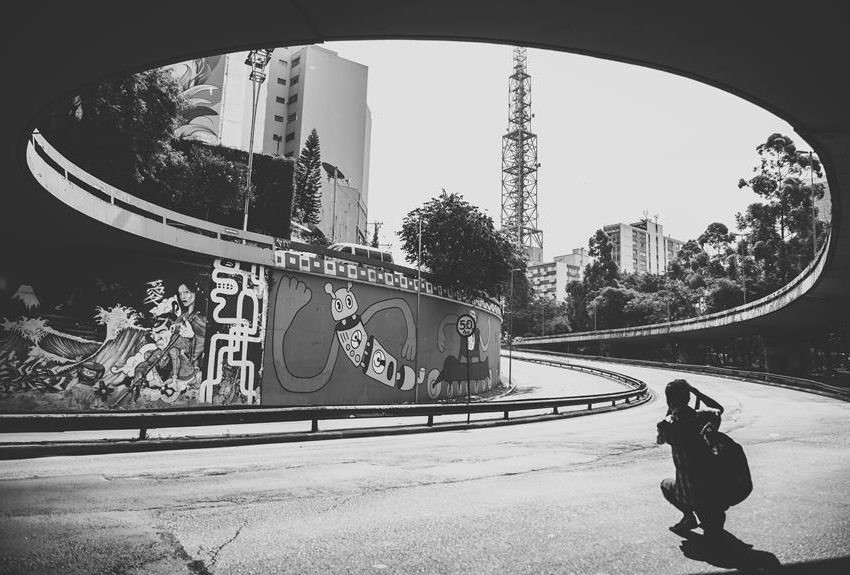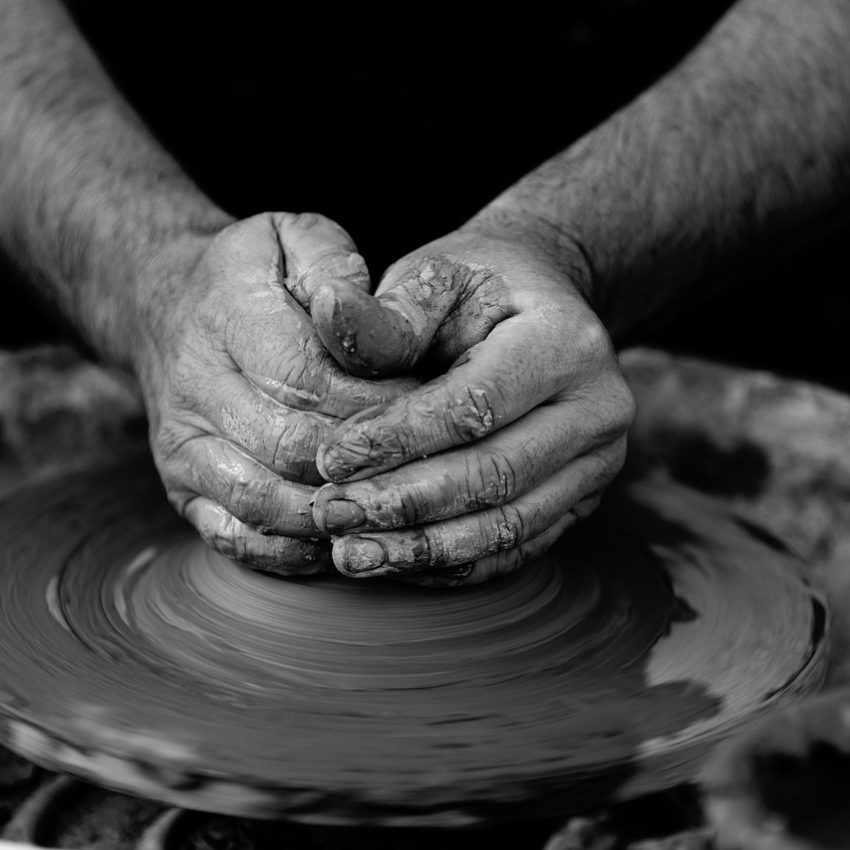Pop Art
Movement, Artists, and Iconic Works
Step into a kaleidoscope of colour and bold statements as we embark on a journey through the vibrant world of Pop Art. Born out of a swirling mix of rebellion and creativity, this electrifying movement redefined the boundaries of traditional art forms with its audacious embrace of popular culture.
Emerging in the 1950s and partly pioneered by the Independent Group in Britain, Pop Art made waves in the art scene by celebrating everyday objects, celebrities like Marilyn Monroe, and consumer products in a way that was both revolutionary and accessible.
Imagine a world where soup cans become artistic masterpieces and comic strips transform into gallery-worthy reflections of society. This is the essence of Pop Art – a cultural phenomenon that challenged conventions, blurred lines between high and low art, and shook up the foundations of artistic expression.
With influences ranging from advertising to mass media, Pop Art captured the spirit of its time and left an indelible mark on art history that continues to dazzle and inspire us today.
Characteristics of Pop Art
Pop Art, a revolutionary artistic movement that emerged in the 1950s, is characterised by its bold colours, use of everyday imagery from popular culture, and a sense of wit and irony.
Unlike traditional art, which focused on classical themes or abstract expressionism, Pop Art embraced the mundane and celebrated ordinary objects and people.
This artistic approach was a deliberate departure from elitist art forms, aiming to make art more accessible by depicting familiar elements from consumer culture like comic strips, advertisements, and product packaging.
The origins of Pop Art can be traced back to early Pop Art in Britain, where a group of artists, including Alison and Peter Smithson and leading Pop artist Richard Hamilton, explored the characteristics of Pop Art at the Institute of Contemporary Art.
Among the early artists who shaped the pop art movement were Eduardo Paolozzi and Larry Rivers, Ray Johnson, Robert Rauschenberg, and Jasper Johns in the United States.
Pop art is widely seen as a reaction to the then-dominant ideas of abstract expressionism, while also expanding on those ideas. With its use of found objects and images, pop art shares similarities with Dada. Both pop art and minimalism are considered precursors to postmodern art or among the earliest examples of it.
Pop Art Movement Fabricating into Culture
Pop art frequently incorporates imagery from contemporary advertising, prominently featuring product labels and logos.
A notable example is Andy Warhol’s Campbell’s Soup Cans. Even mundane items like the labeling on a shipping box containing retail food items have been used as subjects in pop art, as seen in Warhol’s Campbell’s Tomato Juice Box from 1964.
One of the fundamental driving forces behind Pop Art’s rise was consumer culture’s influence on society. Artists such as Andy Warhol famously blurred the lines between high art and mass-produced commercial goods through works like his iconic Campbell’s Soup Cans series.
These artists sought to challenge what could be considered art by elevating everyday objects into subjects worthy of contemplation. By incorporating elements from popular culture into their artwork, Pop Artists explored themes of materialism, celebrity obsession, and the impact of media saturation on modern life.
Pop Art, as a direct response to the rising consumerism and commodification that characterised post-war America, featured American artists who celebrated elements of popular culture such as Marilyn Monroe.
Instead of portraying grand historical events or abstract emotions, artists like Roy Lichtenstein reinterpreted images from comic books with his signature Benday dots technique—transforming mundane scenes into visually striking pieces steeped in irony and social commentary.
Through their work, Pop Artists captured the spirit of an era dominated by mass production and critiqued consumer culture while celebrating its vibrant aesthetics.
Famous Pop Artists & Their Artwork
When delving into the vibrant world of Pop Art, it’s impossible not to shine the spotlight on iconic artists who helped define and shape this revolutionary movement.
Among these luminaries stand Andy Warhol, often dubbed the “Pope of Pop,” whose fascination with consumer culture and fame led him to create unforgettable works like his Campbell’s Soup Cans series. Warhol’s silkscreen technique became synonymous with Pop Art as he blurred the lines between commercialism and high art, challenging traditional notions of beauty and artistic value.
Roy Lichtenstein, known for his comic-book-inspired paintings featuring bold primary colours and Ben-Day dots, brought a playful yet critical approach to popular imagery.
His piece “Drowning Girl” exemplifies his signature style, where he re-appropriated mass-produced images to explore themes of love, loss, and melodrama.
Through meticulous detail and parodic humour, Lichtenstein elevated cartoons into sophisticated art forms while commenting on contemporary society’s obsession with pop culture.
Claes Oldenburg stands out in three-dimensional Pop Art installations for his larger-than-life sculptures that transform everyday objects into monumental pieces of art.
His oversized interpretations of everyday items like typewriters or ice cream cones challenge viewers to reconsider familiar objects in new contexts. Oldenburg’s whimsical approach not only added depth to the movement but also democratised art by making it accessible and interactive for a broader audience.
These visionary artists captured the essence of their time and transcended it by infusing mundane subjects with profound meanings that still resonate today.
Through their innovative techniques and provocative themes, Warhol, Lichtenstein, Oldenburg, and others transformed popular culture into a profound commentary on consumerism, mass media saturation, and societal values – leaving an indelible mark on the art world that continues to inspire generations of creators seeking to push boundaries and challenge conventions.
Iconic Works of Pop Art
Andy Warhol
When delving into Pop Art, it’s impossible not to encounter iconic pieces that have left an indelible mark on art history. One such iconic work is Andy Warhol’s “Campbell’s Soup Cans,” created in 1962.
This series of paintings showcases 32 varieties of Campbell’s soup cans, each meticulously reproduced onto canvas. The overlapping images reflect consumer culture and artistic commentary, challenging the boundaries between high and low art.
Warhol transformed a mundane household item into a symbol of mass production, sparking conversations about commercialism and art’s role in society.
Roy Lichtenstein
Another seminal work in Pop Art is Roy Lichtenstein’s “Drowning Girl” from 1963. This painting is instantly recognisable for its bold lines, vivid colours, and use of Ben-Day dots inspired by comic book printing techniques.
Lichtenstein’s piece captures a dramatic moment with a female figure submerged in water, encapsulating themes of melodrama and emotional intensity often found in popular culture narratives. By appropriating and recontextualising comic strip imagery, Lichtenstein elevated the mundane into high art while critiquing mainstream media’s portrayal of women.
These artworks captivate viewers visually and resonate deeply with cultural significance. They challenged traditional notions of what constituted ‘acceptable’ subject matter for serious art-making by celebrating everyday objects, a tactic Patrick Caulfield and his contemporaries used to forefront themes prevalent in society.
The lasting impact of Warhol’s soup cans and Lichtenstein’s pop-inspired paintings continues to influence contemporary artists who draw inspiration from their innovative techniques and groundbreaking concepts. These works are timeless examples of how Pop Art revolutionised the art world by blurring the lines between popular culture, consumerism, and artistic expression.
Pop Art Beyond Paintings
While Pop Art is often synonymous with canvas paintings, its influence extends beyond traditional two-dimensional artworks. Artists from this movement embraced various mediums, including sculpture, printmaking, and even fashion, to create bold and innovative pieces reflecting the era’s spirit.
One key example of Pop Art transcending paintings is Claes Oldenburg’s “Floor Cake,” a colossal soft sculpture that humorously transformed a mundane object into a larger-than-life work of art. This playful approach to everyday items exemplifies how artists like Oldenburg and David Hockney challenged conventional perceptions of art and consumer culture, bringing a unique perspective to the Pop Art movement.
In addition to sculpture, Pop Art found expression in printmaking techniques such as screen printing. Andy Warhol, known for his vibrant silkscreen prints, pushed the boundaries of this medium by transforming mass-produced images—like his iconic portraits of Marilyn Monroe—into highly coveted pieces of art.
His works not only celebrated celebrity culture but also critiqued society’s commodification of fame and beauty. This fusion of popular imagery with artistic skill was a hallmark of Warhol’s contributions to traditional and non-traditional art forms within the Pop Art movement.
Furthermore, Pop Art made significant inroads into the fashion world, with designers like Roy Halston Frowick embracing its vibrant aesthetic.
Halston’s collaboration with Warhol created iconic designs that blurred the lines between art and clothing, epitomising the movement’s ethos of blurring high and low culture, much like David Hockney’s crossing of boundaries in modern art.
By integrating bold colours and graphic patterns inspired by Pop Art into their collections, fashion designers directly brought this artistic movement’s energy and spirit into everyday wardrobes.
Today, we continue to see echoes of Pop Art in contemporary design trends that draw inspiration from its innovative use of colour, shape, and popular imagery across various creative disciplines.
The Critique of Consumerism in Pop Art
One of the defining characteristics of Pop Art is its sharp critique of mass production, consumerism, and celebrity culture. Artists in this movement sought to expose the pervasive influence of consumer society on our daily lives.
Through their artwork, they questioned the boundaries between high art and popular culture, emphasising that everyday objects and images could be legitimate subjects for artistic representation. This critique aimed to challenge prevailing notions of what art should be and who should have access to it.
Specific artworks within the Pop Art movement often addressed societal issues through a satirical lens. For example, Andy Warhol’s “Brillo Boxes” series replicated Brillo soap pad boxes with meticulous accuracy but presented them as sculptural works displayed in art galleries.
By elevating these ordinary household products to the status of art objects, Warhol forced viewers to reconsider their perceptions of value and authenticity in a consumer-driven world. Similarly, Roy Lichtenstein’s comic book-inspired paintings like “Whaam!” celebrated popular imagery and questioned the distinction between mass-produced entertainment and fine art.
Pop Artists aimed to challenge established ideas about art and society by blurring the lines between commercial design, advertising, and fine art. Their work often incorporated irony and parody to highlight the absurdity of consumerist culture while inviting viewers to contemplate deeper meanings beneath the surface aesthetics.
Through this critical lens, Pop Art encouraged audiences to reflect on how media saturation and material excess shape our identities and values in modern society. Pop Artists used their creative platforms to spark conversations about commodification, conformity, and the nature of artistic expression within a mass-consumer culture.
Pop Art's Global Impact
With its bold and innovative approach to art-making, Pop Art transcended national boundaries to become a global phenomenon. Emerging in the 1950s, Pop Art quickly caught on in America, across Europe, and beyond.
This expansion was fueled by artists seeking new ways to engage with popular culture and challenge traditional artistic norms. As the movement gained momentum, artists began incorporating its vibrant aesthetic and critical themes.
While American Pop Art often focused on consumer culture and mass media, British Pop Art took a slightly different direction by addressing social issues and political commentary.
Artists like Richard Hamilton in Britain used Pop Art techniques to critique technology and society, offering a fresh perspective on the movement.
This divergence in thematic focus between the American and British interpretations of Pop Art added complexity to the movement, showcasing its adaptability to diverse cultural contexts.
Internationally renowned artists like Eduardo Paolozzi from Scotland and Niki de Saint Phalle from France significantly contributed to the global spread of Pop Art.
Paolozzi’s collages and sculptures embraced industrial materials, reflecting the influence of mass production on contemporary life.
On the other hand, Saint Phalle’s colourful and whimsical sculptures challenged societal norms and celebrated individuality.
These artists exemplified how Pop Art resonated with audiences worldwide by blending local influences with universal themes of modernity and consumerism.
Pop Art expanded globally, opening up dialogues across borders and bringing attention to cultural exchanges in an increasingly interconnected world. The movement’s impact can be seen in galleries and public spaces where artists continue to push boundaries through installations that engage with diverse audiences.
By embracing the inclusive spirit of Pop Art, contemporary creators draw inspiration from its legacy while adding their unique perspectives, ensuring that this vibrant art movement remains relevant in our ever-evolving artistic landscape.
Embracing the Boldness of Pop Art Today
In conclusion, Pop Art is a vibrant testament to the bold fusion of popular culture and artistic expression. Its enduring legacy resonates in contemporary art through its fearless exploration of consumerism, mass media, and celebrity worship. By incorporating elements of Pop Art into their creative endeavours, artists today can tap into the movement’s audacious spirit and powerful visual language.
American artists were inspired by this evolution of Pop Art, leading to the development of New York Pop Art, which included paintings and sculptures by many Pop artists such as Andy Warhol. Pop Art is incredibly significant for its use of representational art, combining mass culture with fine art to create a new version of pop culture icons and themes. Pop artists also explored conceptual art, using familiar imagery to critique and celebrate contemporary society.
The movement spread beyond the Western world, influencing Japanese Pop and other global variations. Museums like the Museum of Modern Art and the Pasadena Art Museum have showcased Pop Art prints and paintings, highlighting its impact on contemporary art. The fusion of mass culture and fine art continues to inspire a new generation of artists, ensuring that Pop Art remains a vibrant and influential force in the art world.





